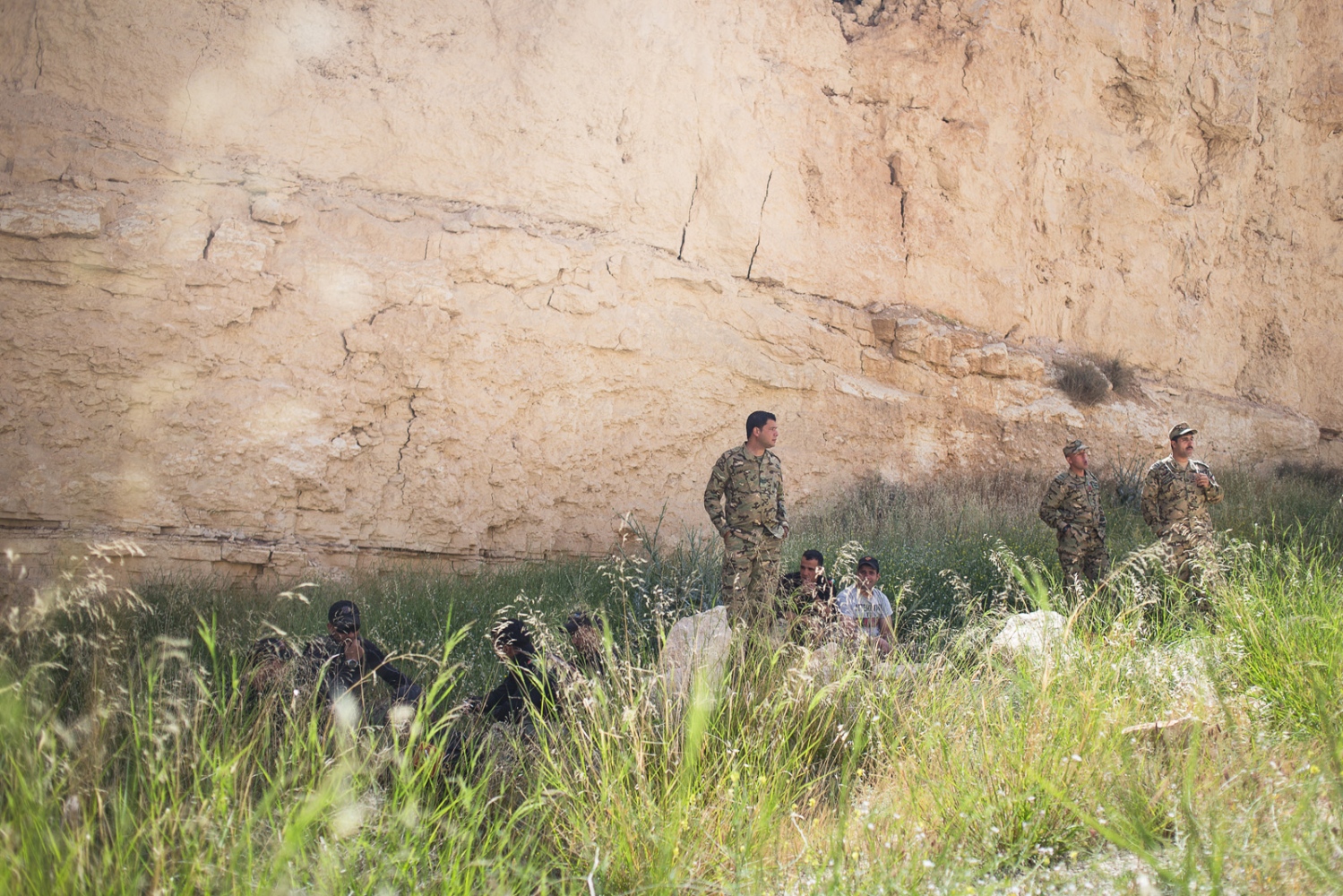

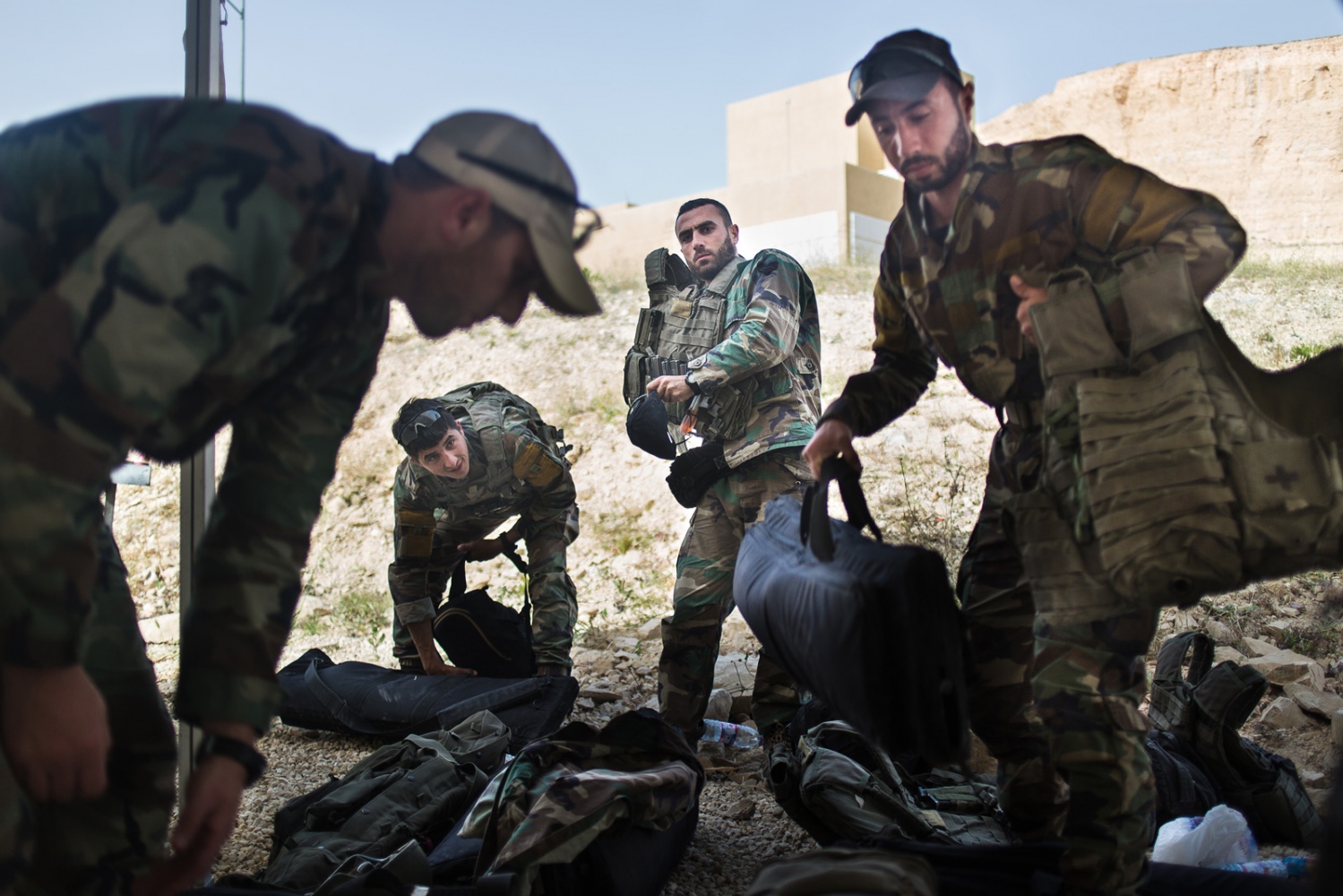
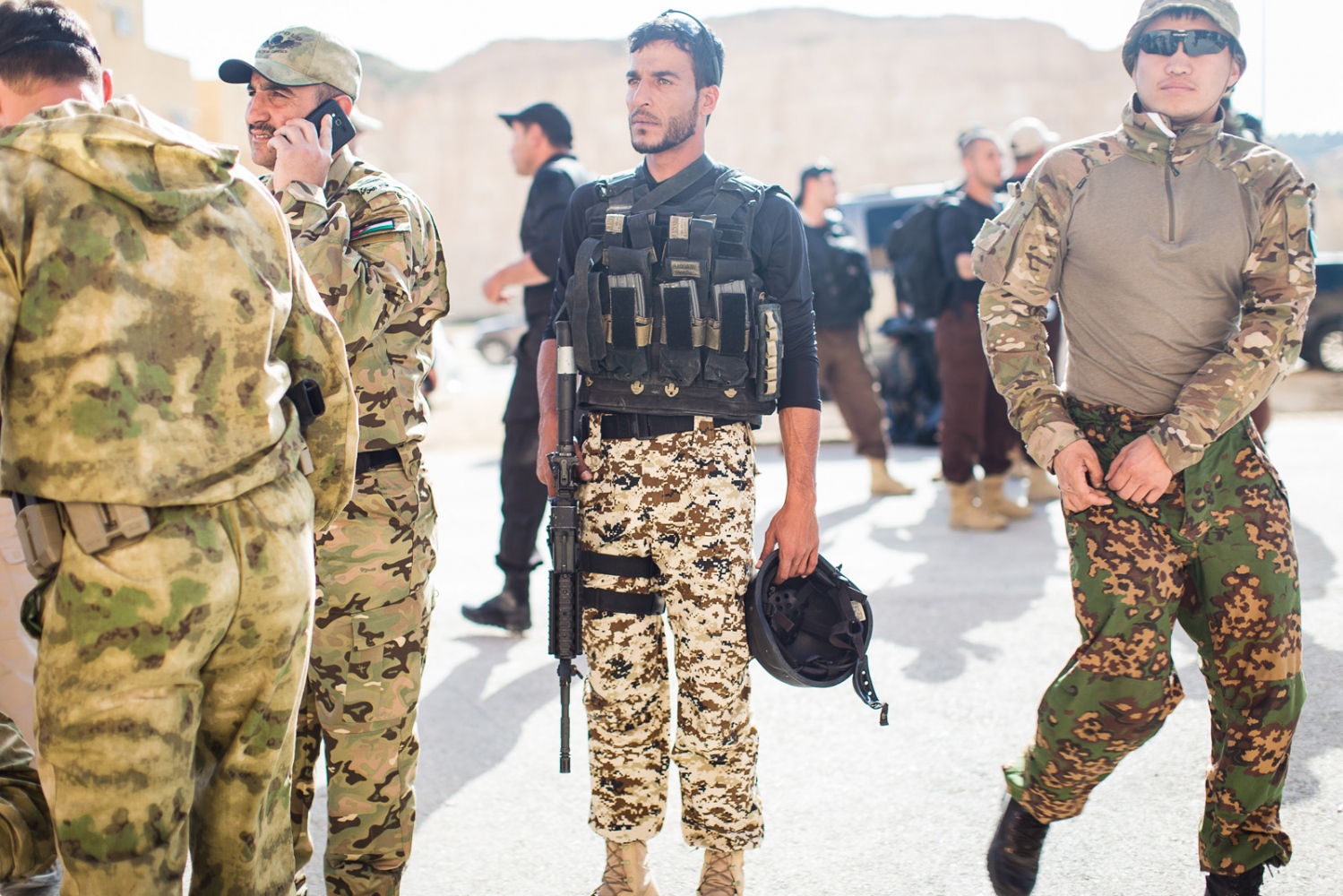
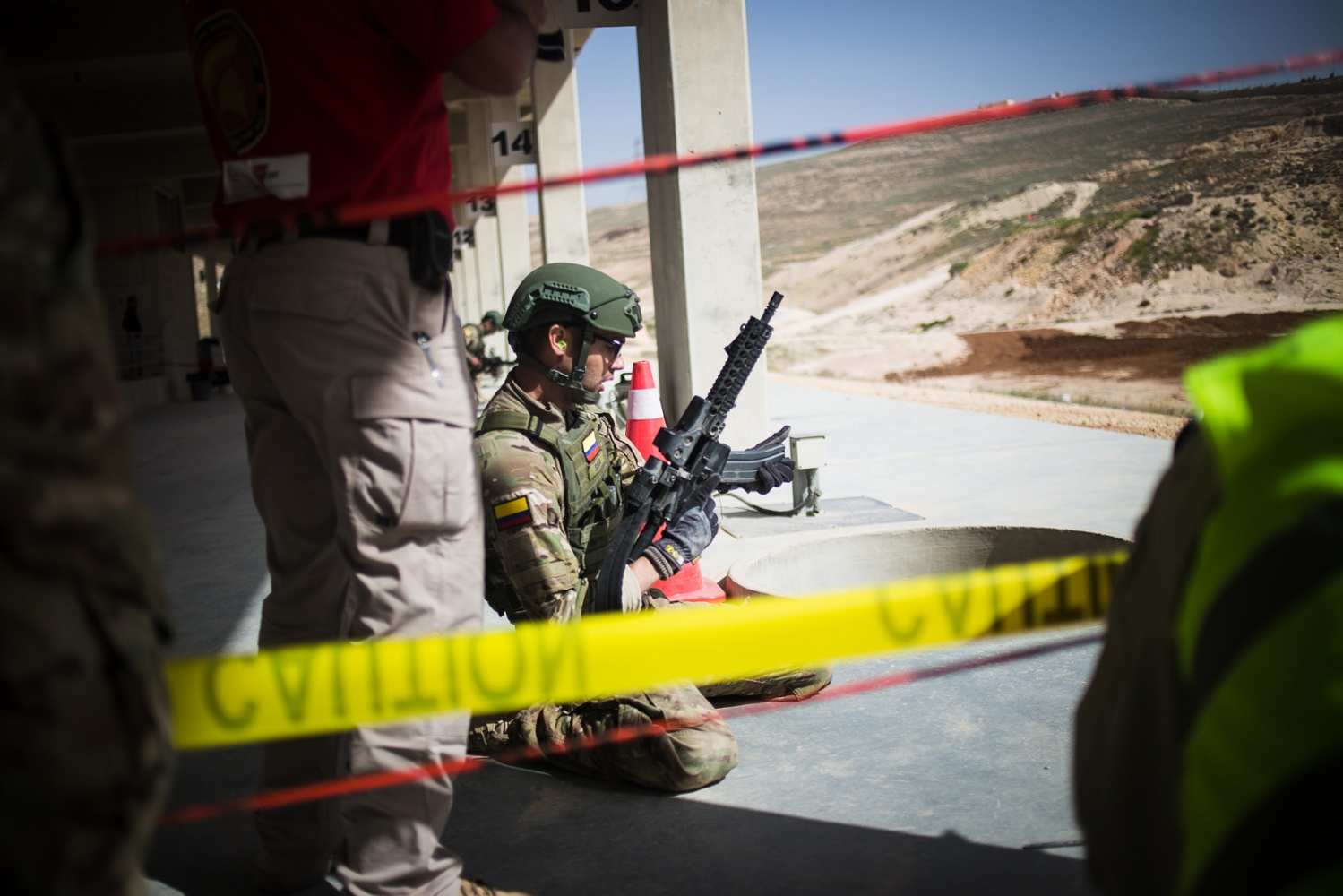
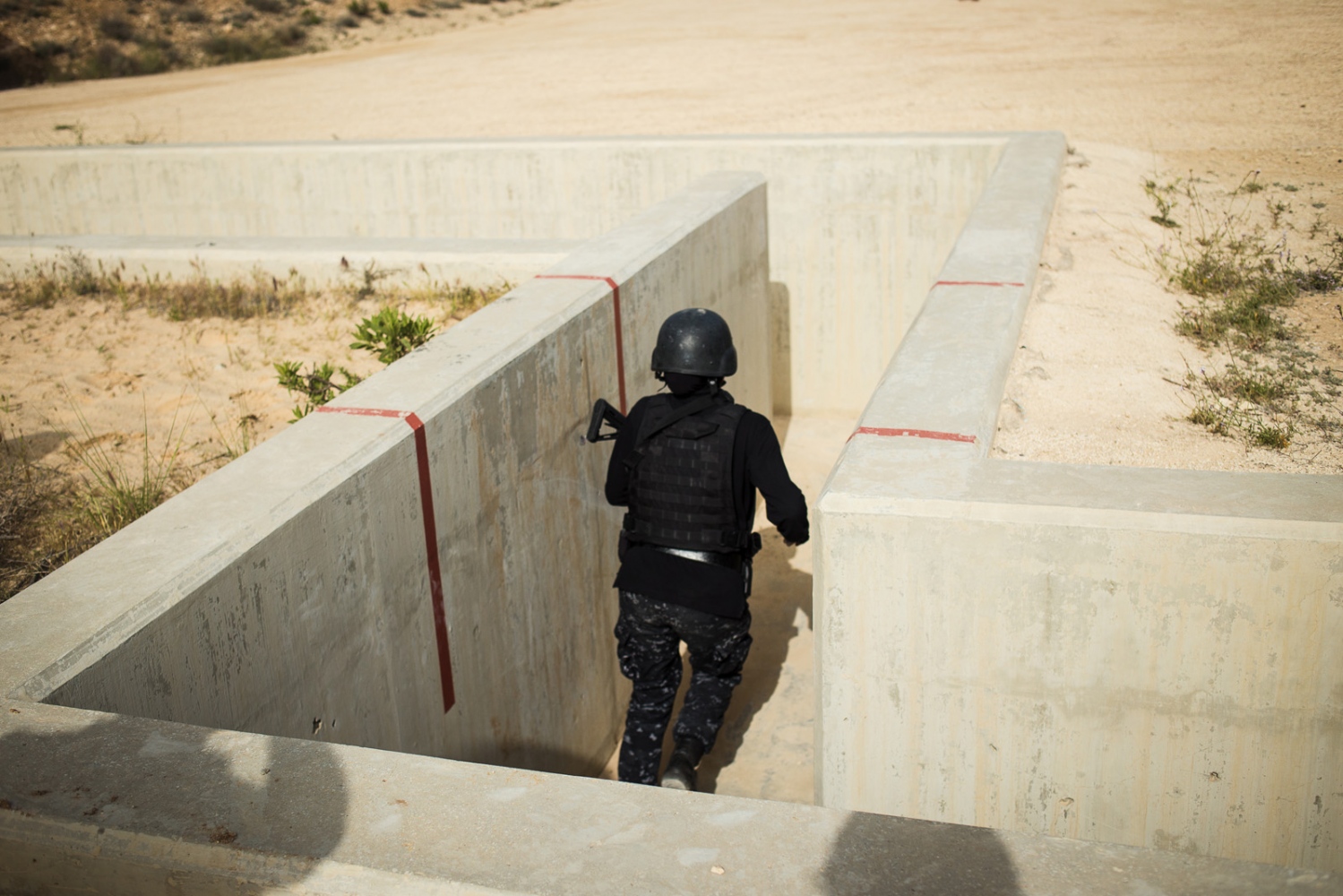
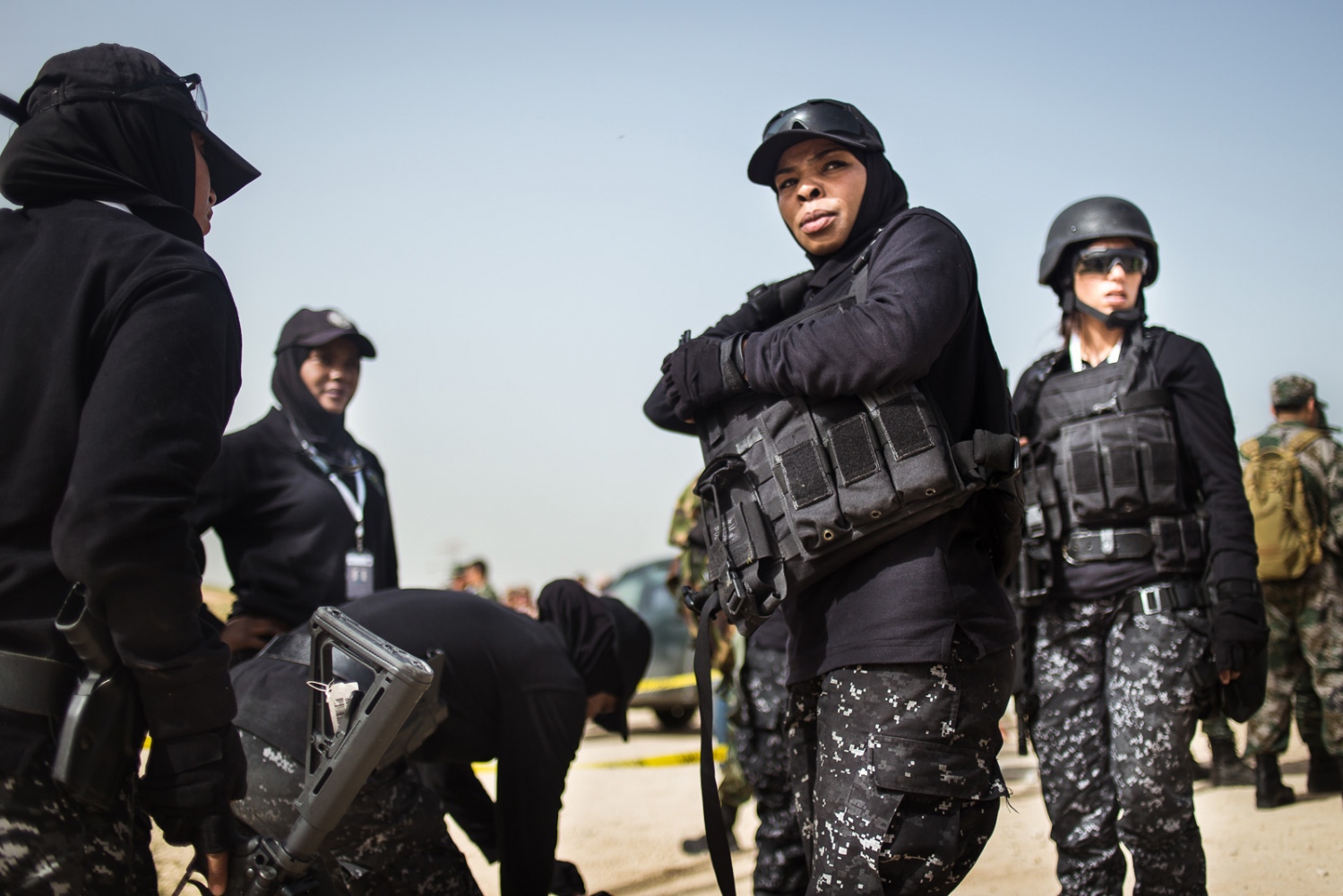
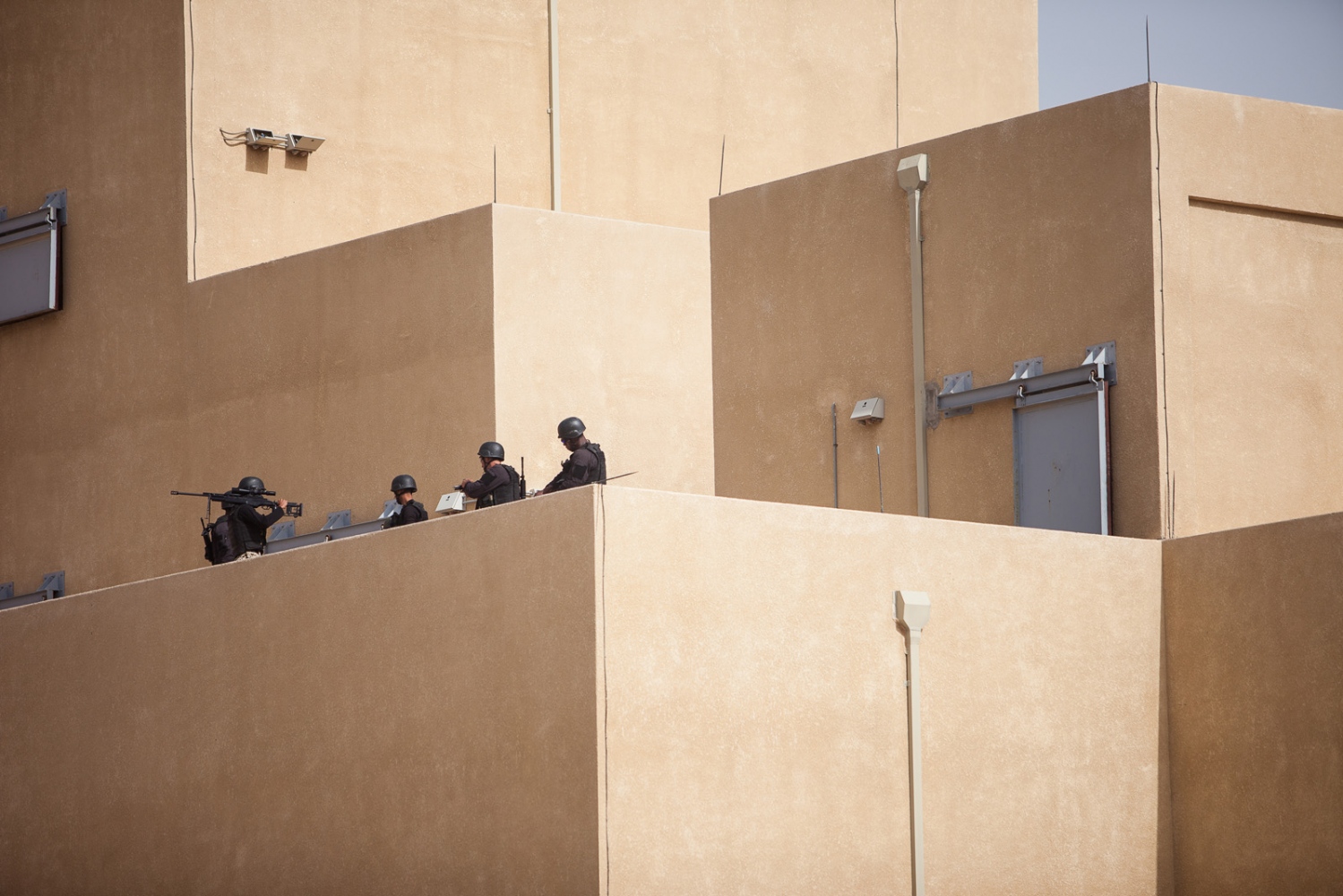
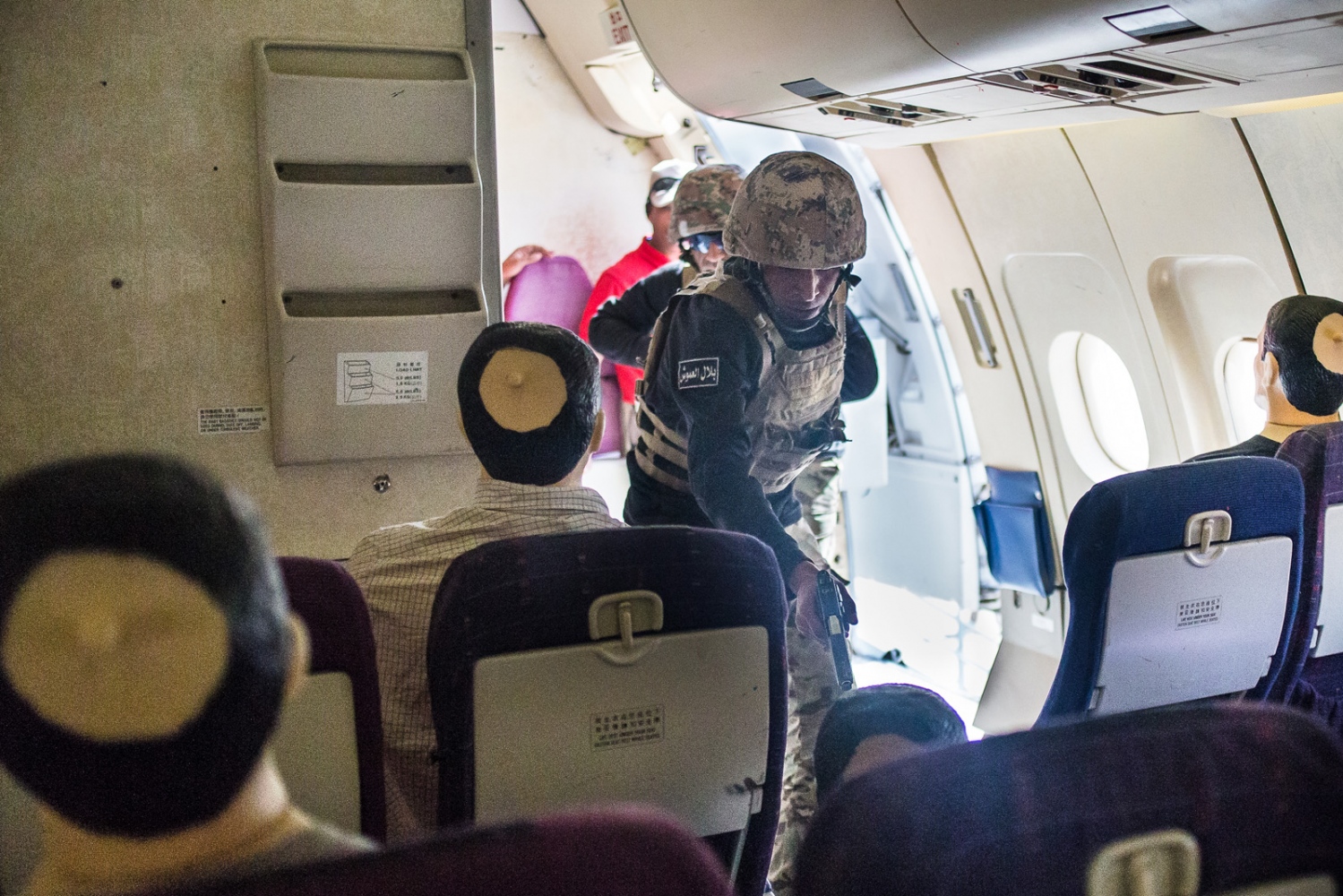
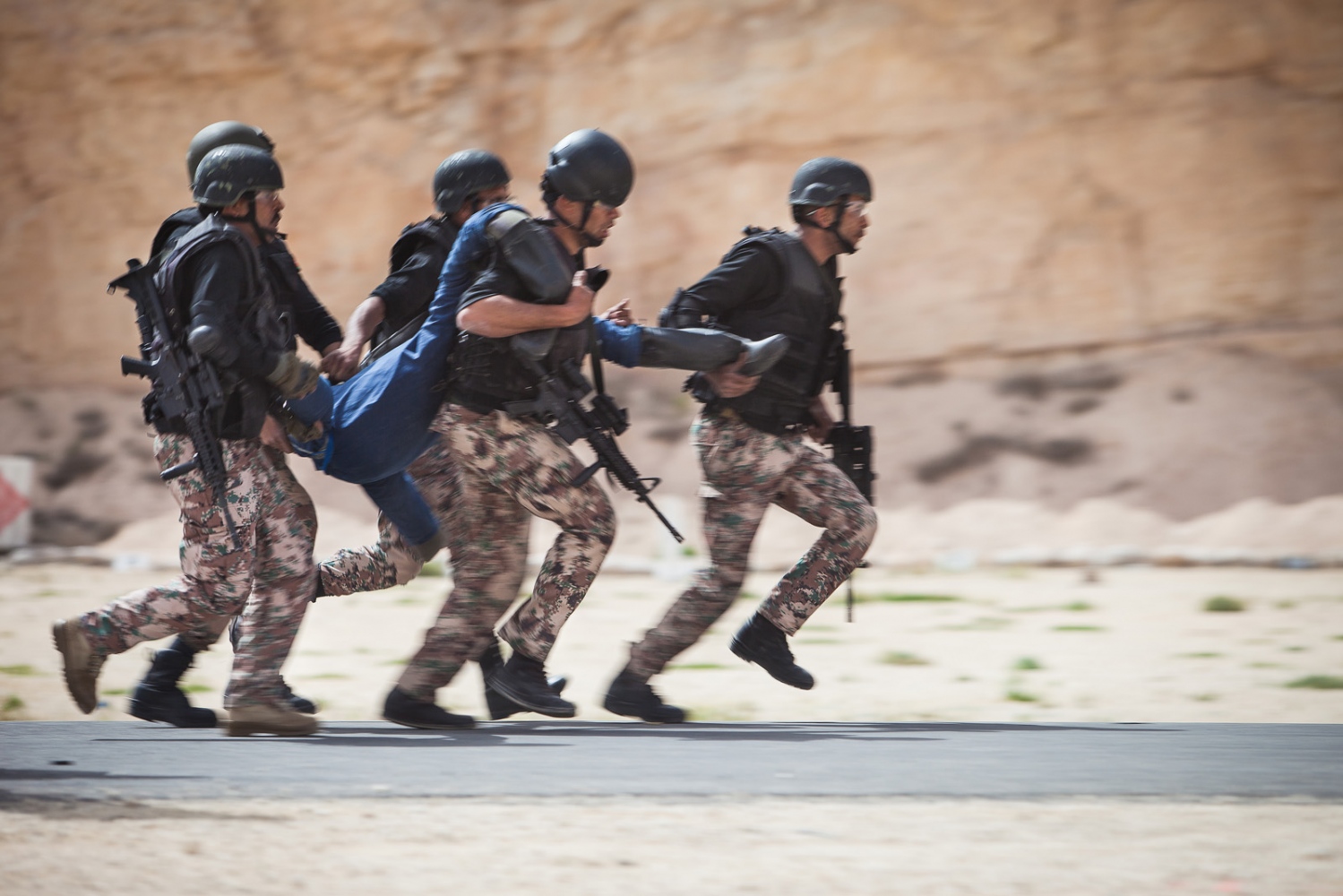
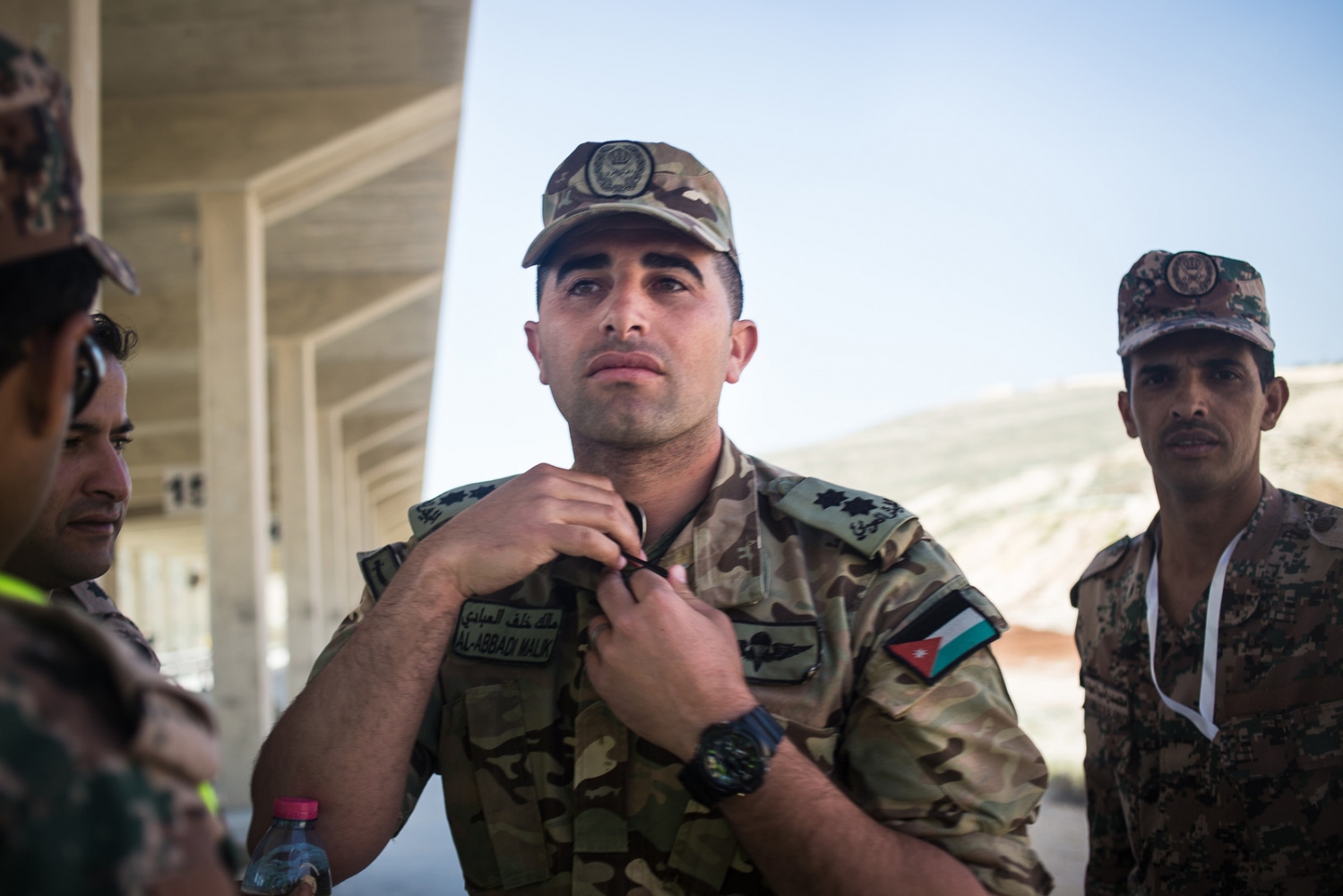
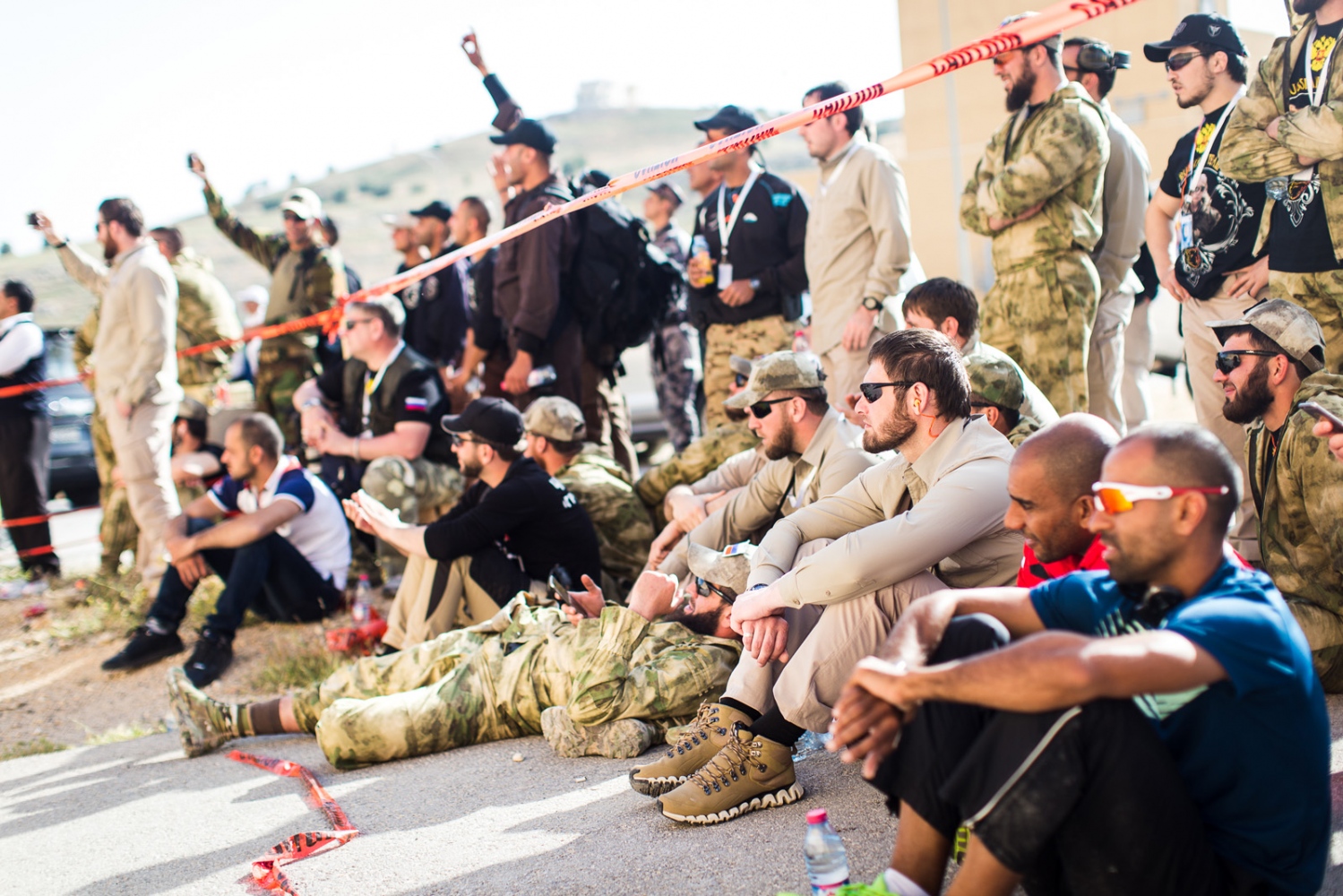
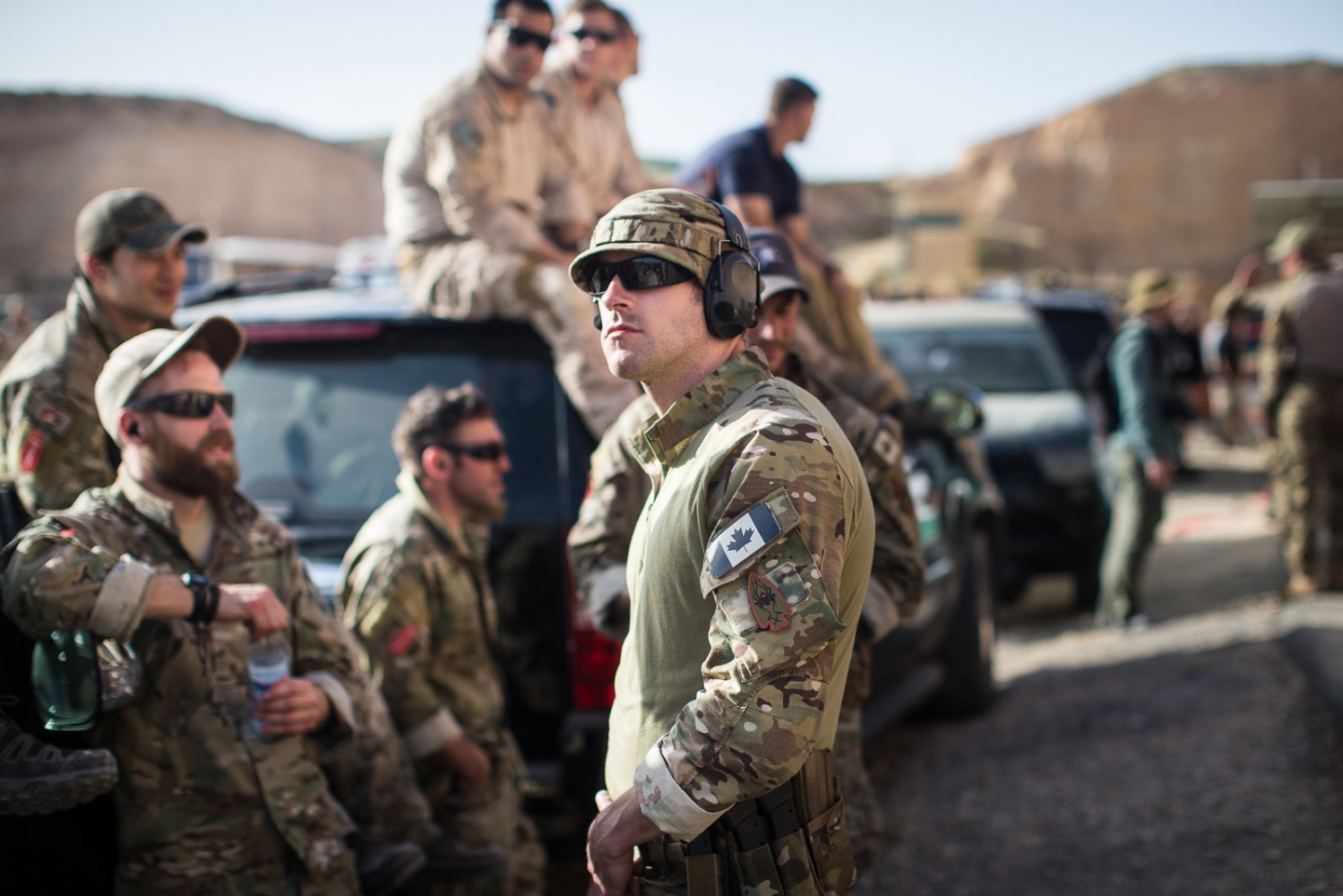
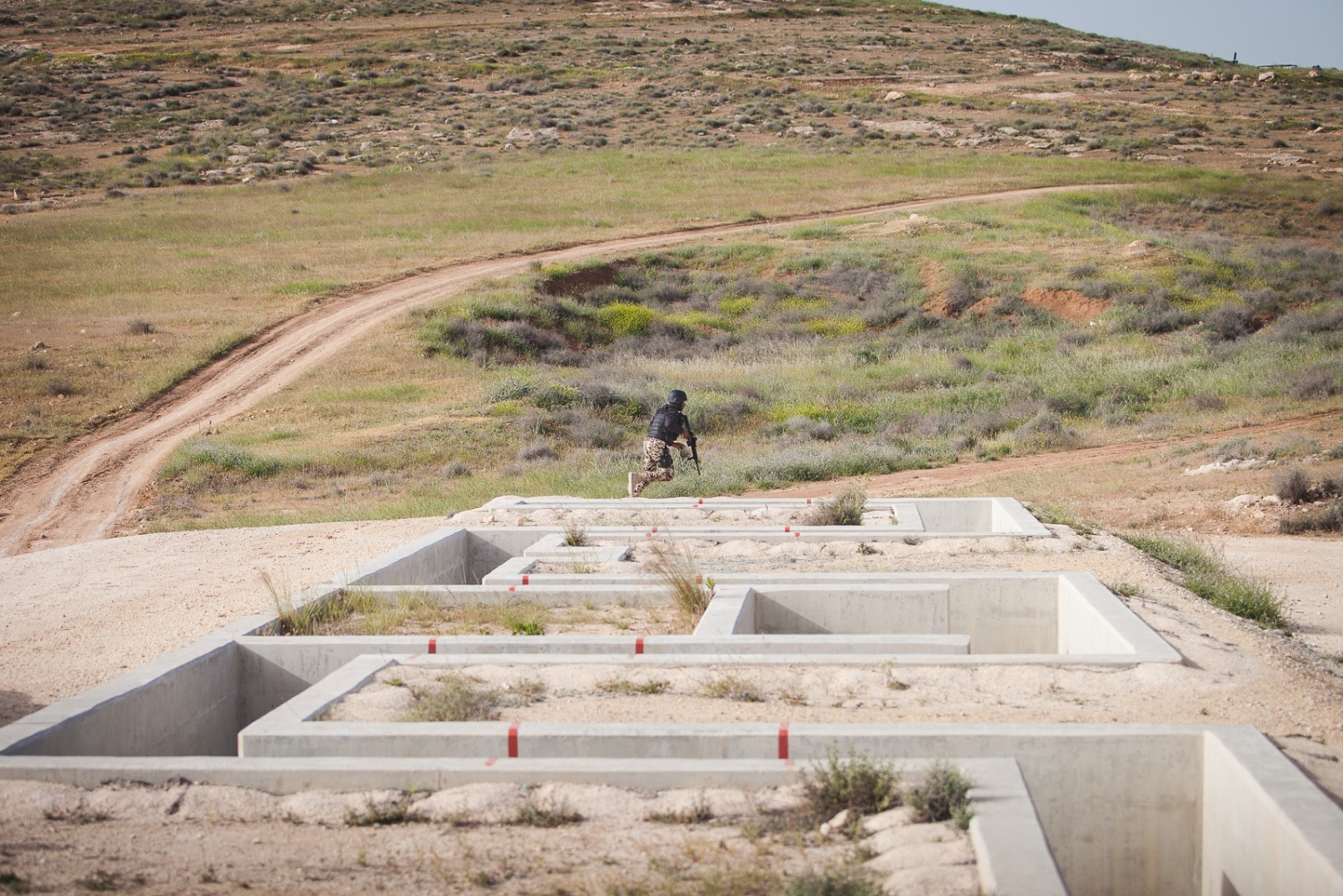
The reverberation from the desert canyon walls makes it difficult to tell where the sound originates ‐ but then, there is the harsh crack from the sniper’s rifle, soldiers sprint through city streets to storm a building, and a human‐sized form is hauled out and loaded onto a truck. Lieutenants shout in Arabic, Russian and English. This isn’t a real war, but the scenes being played out could mimic a not‐so‐distant urban battlefield.
This is a staged scenario in a mock cityscape, part of the seventh annual Warrior Competition held at the King Abdullah II Special Operations Training Center (KASOTC) on the outskirts of Jordan’s capital, Amman. 38 teams from 18 countries participated this year.
Jordan’s day of reckoning came this February when a video showing the death of Jordanian pilot Muath al-Kasasbeh was released by ISIS. The monarchy has since used the pilot's death to galvanize public support for airstrikes in Iraq and Syria. “Jordanians from all walks of life showed the world that Jordanians are united after the great sacrifice of our hero," said Major General Hani Manaser.
With bloody civil wars on two frontiers, Jordan is keen on developing counter‐insurgency capabilities. KASOTC, operated by the Jordanian government and a military contractor based in Maryland, was built with an initial $90 million from the U.S. government. Training at KASOTC can cost up to $250,000 per week.
In 2014 alone, the U.S. provided $660 million in aid to Jordan, which has now increased to $1 billion per year.
As special forces teams undertake missions that can decisively determine the outcome of prolonged conflict ‐ or in the case of police, in quelling civil unrest ‐ demand is likely to only increase.